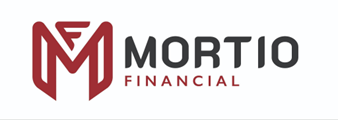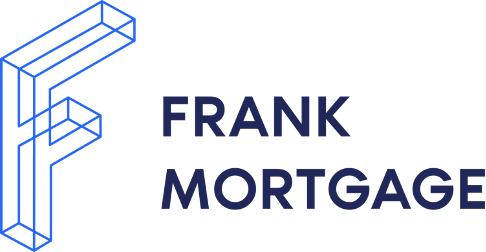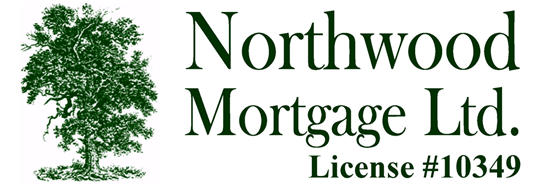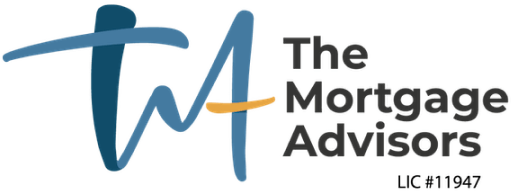Find the Best Open Variable Mortgage Rates in Canada
Compare the best open variable mortgage rates from major banks, credit unions and mortgage brokers.
Rates are based on a home value of $500,000
Rates are based on a home value of $500,000
Rates are based on a home value of $500,000
Today's Best Mortgage Rates in Canada
Evaluate Canada's best 5-year variable mortgage rates in one place. RATESDOTCAs Rate Matrix lets you compare pricing for all key mortgage types and terms.
Rates are based on an average mortgage of $500,000 and subject to change based on filter criteria.
Updated 20:26 on Jul 20, 2025| Placeholder |
Insured
The rates in this column apply to borrowers who have purchased mortgage default insurance.
This is required when you purchase a home with less than a 20% down payment.
The home must be owner-occupied and the amortization must be 25 years or less.
|
80% LTV
The rates in this column apply to mortgage amounts between 65.01% and 80% of the property value. The home must be owner-occupied and have an amortization of 25 years or less. You must have purchased it for less than $1 million. These rates are not available on refinances. Refinances require "Uninsured" rates.
|
65% LTV
The rates in this column apply to mortgage amounts that are 65% of the property value or less. The home must be owner-occupied and have an amortization of 25 years or less. You must have purchased it for less than $1 million. These rates are not available on refinances. Refinances require "Uninsured" rates.
|
Uninsured
The rates in this column apply to purchases over $1 million, refinances and amortizations over 25 years. More info on the differences between insured and uninsured rates.
|
Bank Rate
Bank Rate is the mortgage interest rate posted by the big banks in Canada.
|
|---|---|---|---|---|---|
| 1-year fixed rate | 4.99% | 4.79% | 4.79% | 5.59% |
5.49%
|
| 2-years fixed rate | 4.04% | 4.34% | 4.34% | 4.54% |
4.79%
|
| 3-years fixed rate | 3.87% | 4.09% | 4.09% | 4.24% |
4.29%
|
| 4-years fixed rate | 4.09% | 4.15% | 4.15% | 4.44% |
4.39%
|
| 5-years fixed rate | 3.91% | 3.89% | 3.89% | 3.91% |
4.09%
|
| 7-years fixed rate | 5.19% | 5.00% | 5.00% | 5.19% |
5.00%
|
| 10-years fixed rate | 5.24% | 5.24% | 5.24% | 5.29% |
6.09%
|
| 3-years variable rate | 4.40% | 4.30% | 4.30% | 4.40% |
6.35%
|
| 5-years variable rate | 4.04% | 4.04% | 4.04% | 4.05% |
4.25%
|
| HELOC rate | N/A | N/A | N/A | N/A |
N/A
|
| Stress Test | 5.25% | 5.25% | 5.25% | 5.25% |
N/A
|
Today's Best Mortgage Rates in Canada
Evaluate Canada’s best mortgage rates in one place. You can compare the most current mortgage rates and monthly payments from 175+ banks and lenders across Canada.
Rates are based on an average mortgage of $500,000 and subject to change based on filter criteria.
| Lender
|
Insured
|
Insurable
|
Uninsured
|
|---|---|---|---|
|
MMG Mortgages
|
3.99%
$2,627.39 / month
|
4.19%
$2,681.85 / month
|
4.14%
$2,668.19 / month
|
|
Mortio Financial Corp
|
3.99%
$2,627.39 / month
|
4.24%
$2,695.56 / month
|
4.14%
$2,668.19 / month
|
|
Frank Mortgage
|
4.09%
$2,654.55 / month
|
4.19%
$2,681.85 / month
|
4.09%
$2,654.55 / month
|
|
Northwood Mortgage Ltd.
|
4.14%
$2,668.19 / month
|
4.24%
$2,695.56 / month
|
4.24%
$2,695.56 / month
|
|
Innovation Federal Credit Union
|
4.39%
$2,736.87 / month
|
4.39%
$2,736.87 / month
|
4.39%
$2,736.87 / month
|
|
True North Mortgage
|
2.99%
$2,363.66 / month
|
2.99%
$2,363.66 / month
|
2.99%
$2,363.66 / month
|
|
The Mortgage Advisors
|
3.87%
$2,594.98 / month
|
3.87%
$2,594.98 / month
|
3.87%
$2,594.98 / month
|
|
Nesto
|
3.91%
$2,605.76 / month
|
3.91%
$2,605.76 / month
|
3.91%
$2,605.76 / month
|
|
MortgagestoGo
|
3.94%
$2,613.86 / month
|
3.94%
$2,613.86 / month
|
3.94%
$2,613.86 / month
|
|
Hypotheca
|
3.94%
$2,613.86 / month
|
3.94%
$2,613.86 / month
|
3.94%
$2,613.86 / month
|
|
One Link Mortgage & Financial
|
3.95%
$2,616.57 / month
|
3.95%
$2,616.57 / month
|
3.95%
$2,616.57 / month
|
|
Northern Birch Credit Union
|
3.99%
$2,627.39 / month
|
3.99%
$2,627.39 / month
|
3.99%
$2,627.39 / month
|
|
Monster Mortgage
|
3.99%
$2,627.39 / month
|
3.99%
$2,627.39 / month
|
3.99%
$2,627.39 / month
|
|
Sudbury Credit Union
|
3.99%
$2,627.39 / month
|
3.99%
$2,627.39 / month
|
3.99%
$2,627.39 / month
|
|
Mainstreet Credit Union
|
3.99%
$2,627.39 / month
|
3.99%
$2,627.39 / month
|
3.99%
$2,627.39 / month
|
|
The Police Credit Union
|
3.99%
$2,627.39 / month
|
3.99%
$2,627.39 / month
|
3.99%
$2,627.39 / month
|
|
City Wide Financial Corp
|
3.99%
$2,627.39 / month
|
3.99%
$2,627.39 / month
|
3.99%
$2,627.39 / month
|
|
East Coast Mortgage Brokers
|
4%
$2,630.10 / month
|
4%
$2,630.10 / month
|
4%
$2,630.10 / month
|
|
Prospera Credit Union
|
4.04%
$2,640.95 / month
|
4.04%
$2,640.95 / month
|
4.04%
$2,640.95 / month
|
What is a 5-year open variable-rate mortgage?
An open 5-year variable has some key similarities and differences versus the more popular closed 5-year closed mortgage.
On the one hand, both are variable, or “floating-rate” mortgages, meaning the interest costs can fluctuate over the term if prime rate rises or falls. Unless you have a fixed-payment variable rate (usually just called a variable-rate mortgage, or VRM), these movements in prime could affect your monthly mortgage payments (that’s referred to as an adjustable-rate mortgage, or ARM).
In the case of a VRM, if prime rate rose, the amount of your monthly payment going towards interest cost would increase and the amount going towards principal would decrease, and vice versa if prime rate fell.
The thing that makes open variable mortgages unique is that they allow the borrower to repay as much of the loan as they like -- at any time without penalty. That said, the loan is still based on scheduled payments over the five-year term.
Closed mortgages, on the other hand, have restrictions on the amount you can repay on top of your scheduled mortgage payments.
Breaking a closed variable mortgage early can also entail prepayment charges. Those “penalties,” as it were, are typically three months’ interest.
Pros of a 5-year variable-rate open mortgage
If you’re debating whether a 5-year variable-rate open mortgage is for you, here are some advantages to consider.
- Flexibility: When it comes to paying off your mortgage, having an open mortgage means you can make more frequent payments or make a large lump-sum payment without incurring any penalties. That makes the product well-suited for short-term financing needs with an uncertain time horizon.
- Refinance at any time: For those who want the freedom to refinance their mortgage at any time, an open variable-rate mortgage provides just that. There is absolutely no penalty should you want to refinance early and because you can choose any lender, you have full access to the market’s best rates.
Cons of a 5-year variable-rate open mortgage
Open variables have some disadvantages as well.
- Risk of rising rates in the future: Your interest costs could potentially surge if interest rates rise quickly. That’s because variable rates fluctuate as prime rate rises and falls.
- Higher rates: Because open mortgages offer the ultimate flexibility when it comes to prepaying your mortgage, the interest rate is significantly higher compared to closed mortgages. As an example, if a closed variable rate is prime – 1.00%, an open variable could be two points higher, or prime + 1.00%.
The significant rate premium means you should never plan to hold an open variable for more than 3-9 months. Any more than that and you’d potentially be better off getting a low-cost closed variable, breaking the mortgage early and paying the 3-month interest charge.
Learn more about 5-year variable mortgages.
Variable Rate Outlook – 2021
As of this writing, in spring 2021, prime rate has remained unchanged at 2.45% since March 2020. Guidance from the Bank of Canada suggests no changes to its target overnight rate until mid-to-late 2022.
Those tempted by low floating-rate offers can have confidence that rate hikes are not on the horizon for at least the next year and a half, says the Bank of Canada. However, borrowers should be mindful that the most likely direction for rates is upwards, so be prepared to:
(A) see your rate rise in the coming years, or
(B) lock into a fixed rate at the first sign that rates will rise.
Note: There is little chance of obtaining the best fixed rates available when you are switching from a variable to a fixed. Among other reasons, that’s because lenders anticipate rising rates well ahead of most borrowers and price their fixed-rate offers accordingly.

Open variable rate alternatives
If the flexibility of being able to repay your mortgage at any time is important to you, another option is a Home Equity Line of Credit (HELOC).
A HELOC lets you borrow against your home equity. HELOC interest rates fluctuate because they are quoted as a discount or premium to the prime rate. Borrowers can repay their HELOC as quickly or slowly as they want, as only the interest cost must be paid each month.
HELOCs have cheaper rates but often higher set-up costs. Moreover, you cannot transfer a mortgage into a HELOC so legal fees generally apply. Some lenders do allow free transfers into an open variable mortgage.
Find out if a HELOC is right for you.
























